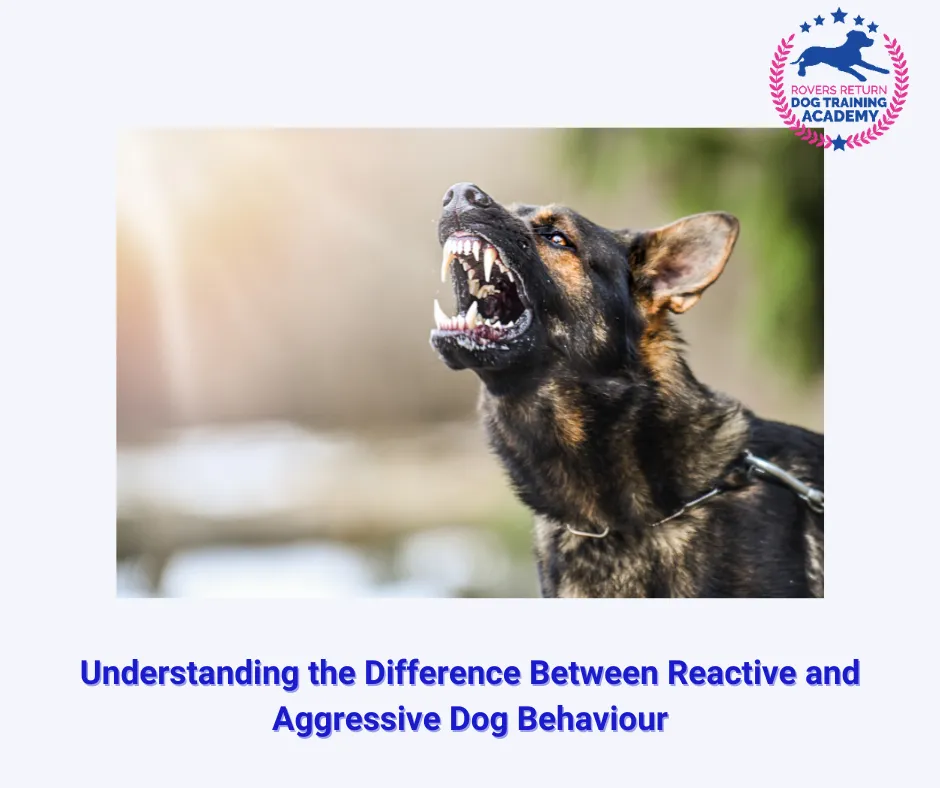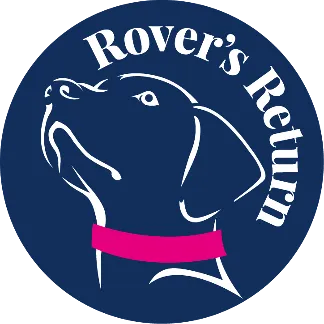Book a FREE 1:1 Assessment Call By Clicking HERE
Specialising In Dog Reactive Behviour
Accredited by APDT, ABTC and UK DOG Behaviour and Training Charter
Qualified and Experienced
Force Free Trainer and Behaviourist
Dog Training Leicestershire Educational Blogs

Understanding the Difference Between Reactive and Aggressive Dog Behaviour
Understanding Dog Behaviour: Reactivity vs Aggression - Behaviour Specialist Leicestershire

Before we dive into the specifics, it's crucial to understand that all dogs have the potential to exhibit both reactive and aggressive behaviours under certain circumstances. However, these behaviours are not synonymous. They stem from different emotional states and motivations.
Behaviour is communication and we should listen and understand our dogs and act on behalf of them, to make them feel safe.

There are two types of aggression. Proactive and reactive.
Reactive Dog Behaviour
A reactive dog is one that may appear to overreact to specific triggers or stimuli in their environment. This overreaction can manifest in various ways such as barking, lunging, or growling. These types of behaviours are driven by emotions and a direct result of the adrenalin response.
Survival is the ultimate goal in all animals, so when threatened, the instinct will be profound and overtake everything. It's important to note that reactivity does not necessarily mean aggression; it's more about an exaggerated response to a perceived threat and the need to keep themselves safe.
The behaviour that happens is brain dirven and a response to keep the dog safe and if they work, they will be repeated again in a similar situation.
Reactive behaviours rooted in fear or anxiety.
Through the process of domestication, behaviours seen to be 'aggressive' were bred out of dogs. Dogs want to avoid conflict situations as they are social animals.
An experiment on animals found that mass of neurons in the brain called the venromedial hypothalamus when stimulated caused behaviours associated with aggression. And immediately when it stopped, they returned to normal, and they didn't react in one scenario only- when mating! This can explain why reactive dogs can be ok with females on heat.
Aggressive Dog Behaviour
Proactive aggression is goal-directed or reward-directed aggression and the dog acts that way to gain something.
When I ran the subject through AI this is what it came up with (I don't use AI to write my articles, just as reference!)
Aggressive behaviour in dogs involves actions intended to harm another animal or person physically. It includes biting, snapping, snarling, and relentless barking with a clear intention to intimidate or attack.
Aggression can stem from various factors such as fear (fear-aggression), territoriality (territorial aggression), possessiveness (resource guarding), frustration (redirected aggression), and pain (pain-induced aggression) among others.
Key Differences Between Reactive and Aggressive Dogs
True agression is rare. As I stated earlier, dogs generally want to avoid conflict. Every single act is a direct response to an event and the emotions triggered by the event.
Anger is an emotion that dogs feel, however, the dogs brain cannot assign motive to anger, so they won't be angry at you because you have done something. Anger is described as a secondary emotion to fear or pain or frustration.
One of the key differences between reactive and aggressive dog behaviour lies in their intent. A reactive dog is primarily reacting out of fear or discomfort, and proative aggression lies in intenet of a goal and what they achieve from it. This may link to territory, and guarding type behaviours, however, these behaviours can also be linked to fear responses.
Another difference is in their body language. Reactive dogs often display signs of stress or fear, such as a tucked tail, lowered body posture, or dilated pupils. Aggressive dogs, however, may exhibit confident body language like standing tall, direct eye contact, and raised hackles. But as discussed earlier, when a behaviour works it will be adapted again, so the dog may seem confident, but the behavour can still be linked to fear.
Unfortuatelt it is not as simple as aggression is this and reactive is that, it all comes down to what emotions are driving the behaviour at that time, and as a behaviourist, a full behavioural assessment is the best way to manage and change behaviours using force-free methods to define the function of the behaviour for that dog, at that time.
Resource guarding can be due to fear and our actions around objects can make the behaviour worse. This is especially true when dogs don’t guard specific objects, and it happens randomly (from a human perspective).
Frustration quickly transfers into reactive behaviour due to sharing the same neural pathways. This could be linked to proactive aggression.
There are many reasons why animals act the way that they do. Pain, stress, prior associated learning, environment, brain health, but ultimately the assciated demotion connected to the trigger will define their behaviour.
Managing Reactive and Aggressive Behaviour
Understanding how emotions are linked to behaviour is the first step. Your dog is not being naughty, they are truly feeling stressed and threatened at that time.
Working with a qualified experienced behaviourist who uses positive reinforcement training will teach you how and why the behaviours transpire.
But here are some tips
1. Identify Triggers: The first step in managing reactivity or aggression is identifying what triggers these behaviours in your dog. Once you know the triggers, you can work on desensitizing your dog to them gradually. I advise people to keep a diary of the triggers and what behaviours that are seen
2. Seek Professional Help: If your dog’s behaviour is causing concern, it's advisable to seek help from a professional dog trainer or a veterinary behaviourist. They can provide personalized training plans and strategies to manage your dog's behaviour effectively.
3. Positive Reinforcement: Rewarding good behaviour is always more effective than punishing bad behaviour. Use treats, toys, or praise to reinforce calm and non-reactive behaviours.
4. Training and Socialisation: Regular training sessions can help manage reactive behaviours by teaching your dog how to respond appropriately to triggers. Socialization from a young age can also prevent aggression by exposing your dog to various people, animals, and environments in a controlled manner.
In Conclusion
Understanding that there is a difference between reactive and aggressive dog behaviour can significantly improve our relationship with our pets. Remember true aggression is rare.
Understanding this allows us to know what their needs are and provide them with the safety care they require.
Remember that every dog has its unique personality and temperament; what works for one might not work for another. Always approach behavioural issues with patience and understanding – after all, our furry friends rely on us for their well-being!
Rovers Return Training Academy is based in Leicestershire. I specialise in reactive, fear and anxiety based behaviours.
I carry out online sessions or in person if in Leicetsershire, Lutterworth, Broughton Astley, Rugby Nuneaton and the surrounding areas.
Highly Qualified Behaviourist
Accredited by APDT, ABTC and UK DOG Behaviour and Training Charter
Accredited Scentwork Instructor
Force Free Trainer and Behaviour
Force Free Trainer and Behaviour
Accredited Scentwork Instructor
Accredited by APDT, ABTC and UK DOG Behaviour and Training Charter
Highly Qualified Behaviourist
Contact Us
Sam: 07725 802995
You can contact us via Live Chat button at the bottom of the screen or the contact box to the right.
You can also book one of our services online using the View Dates buttons under the service you require.
© 2023 by Rovers Return Dog Trainers Academy - Force Free Dog Training Lutterworth, Broughton Astley, Leicestershire, Hinckley, Nuneaton, Stoney Stanton, South Kilworth, Ullesthorpe
Privacy Policy | Terms and Conditions | Terms and Conditions of Services | Sitemap


Facebook
Instagram
X
LinkedIn
Youtube
TikTok